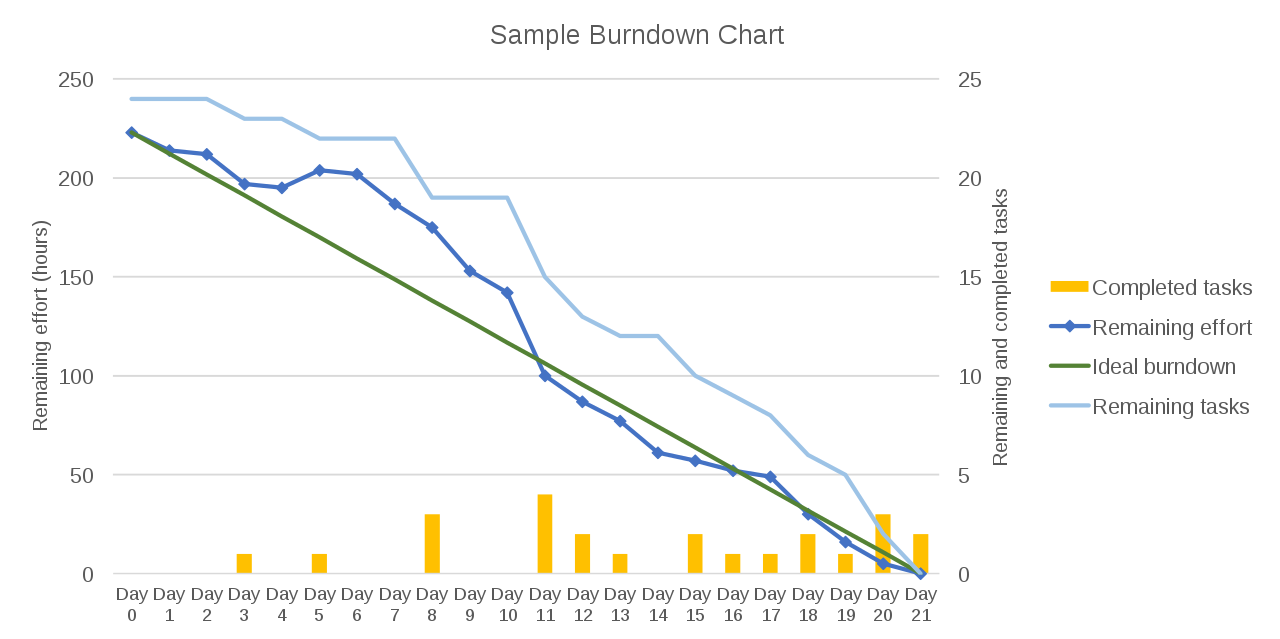What is Product Backlog Management?
A well-managed product backlog is essential for successful product development. It is a living document outlining the work needed to deliver a high-quality product to market.
Effective backlog management helps prioritize tasks, ensures that resources are allocated appropriately, and keeps the development process running smoothly.
This guide will explore strategies for managing product backlogs successfully and provide insights on best practices.
Key Components of a Product Backlog
Understanding what product backlog refinement is starts with knowing what to look out for inside your product development process.
Below are the key components you must look out for in your product backlog.
User Stories
User stories are concise, user-focused descriptions of desired features and functionality. They provide a clear understanding of the value a feature brings to users, helping to prioritize tasks and guide development efforts. You can use a template to make it as easy as possible for your team:
As a [target audience], I want to [solution to pain point], so I can [benefit].
Example: A user story for an e-commerce platform might be, "As a shopper, I want to filter products by price, so I can find items within my budget."
Tasks
Tasks are the specific actions required to implement a user story. They are typically broken down into smaller, manageable units of work, making it easier for developers to estimate effort and track progress.
Example: Tasks for the user story above might include creating a UI element for price filtering, implementing the filtering logic, and testing the functionality.
Prioritization
Prioritization is the process of determining which user stories and tasks should be addressed first. By prioritizing the most important and high-impact tasks, product managers can ensure that resources are allocated effectively and development efforts are focused on delivering maximum value.
Example: Using a prioritization framework like MoSCoW (Must-haves, Should-haves, Could-haves, and Won't-haves) can help product managers prioritize tasks based on their importance and urgency.

Strategies for Effective Product Backlog Management
Having a list of components you should be looking out for isn't enough. How do you use these product backlog elements to refine your process?
You'll need product backlog prioritization techniques, collaboration tools, updated framework, and more concepts to implement.
Below are the most important strategies you should be following for effective product backlog management:
Regularly Update and Refine the Backlog
A product backlog is a living document that must be continually updated and refined to reflect changes in business goals, user needs, and market conditions. By keeping the backlog current and relevant, product managers can ensure that development efforts remain focused on delivering value and addressing the
most pressing needs on the roadmap.
Example: Agile methodologies, like Scrum, encourage regular backlog grooming sessions, where the team reviews and updates the backlog to ensure it accurately reflects the current state of the project.
Collaborate with Cross-functional Teams
Effective backlog management requires input from various stakeholders, including developers, designers, marketing, and customer support teams. By fostering open communication and collaboration, product managers can ensure that the backlog reflects the needs and priorities of all team members and
highlights dependencies, resulting in a more successful product.
Example: Tools like Jira or Trello can be used to facilitate collaboration and keep all team members informed about the status of tasks and user stories.
Use a Consistent Prioritization Framework
Using a consistent prioritization framework can help product managers
make objective decisions about which tasks should be addressed first. By applying the same set of criteria to all user stories and tasks, product managers can ensure that development efforts are focused on delivering maximum value and addressing the most critical needs.
Example: The RICE prioritization framework (Reach, Impact, Confidence, and Effort) is a popular method for scoring and prioritizing tasks based on their potential impact and the effort required to complete them.
Break Down Tasks into Manageable Units of Work
Breaking tasks into smaller, manageable units of work can make it easier for developers to estimate effort and track progress. This approach also allows for more flexibility in allocating resources and adjusting priorities as the project evolves.
Example: A task to develop a new feature might be broken down into smaller tasks, such as creating wireframes, developing UI components, and implementing backend logic.
Monitor Progress and Adjust Priorities as Needed
Regularly reviewing the progress of tasks and user stories can help product managers identify potential roadblocks and adjust priorities as needed. By monitoring progress and adapting the backlog in response to changing circumstances, product managers can ensure that development efforts remain focused on delivering value and meeting project goals.
Example: Using a burndown chart, product managers can visualize the progress of tasks over time and identify any deviations from the planned timeline, allowing for adjustments to be made as needed.

Encourage Team Input and Ownership
Involving the entire team in backlog management can lead to more informed decisions and increased team ownership of the product's success.
Encourage team members to contribute their ideas and perspectives, and actively seek feedback to ensure the backlog accurately reflects the needs and priorities of all stakeholders.
Example: In agile development methodologies, backlog refinement meetings allow the entire team to review, discuss, and provide input on the backlog's contents, fostering a sense of shared responsibility for the product's success.
Balance Short-term and Long-term Priorities
Effective backlog management requires a delicate balance between addressing immediate needs and planning for the future.
By carefully considering both short-term and long-term priorities, product managers can ensure that development efforts are focused on delivering value in the present while also laying the groundwork for future success.
Example: A product manager might prioritize a short-term task, such as fixing a critical bug, while also keeping an eye on long-term goals, like the development of a new feature that aligns with the product's strategic vision.

Overcoming Common Challenges in Product Backlog Management
Now that we know the answer to what is product backlog refinement, let's examine some common challenges and their solutions.
Handling Scope Creep
Scope creep occurs when additional features or functionality are added to a project beyond its original goals. This can lead to increased complexity, delayed timelines, and reduced product quality.
Solution: To prevent scope creep, product managers should maintain a clear and focused backlog, and be vigilant in resisting the temptation to add unnecessary features.
Example: Establishing a clear and concise product vision can help guide decision-making and prevent scope creep by keeping the team focused on the product's core goals.
Managing Stakeholder Expectations
Managing stakeholder expectations is a critical aspect of backlog management.
Solution: Product managers must balance the needs and priorities of various stakeholders, including customers, business leaders, and development teams, to ensure that the product meets the needs of all parties involved.
Example: Regular communication with stakeholders, such as through status updates and progress reports, can help manage expectations and ensure that everyone is on the same page regarding the product's goals and priorities.
Addressing Technical Debt
Technical debt refers to the additional work that arises when shortcuts or suboptimal solutions are implemented in the development process. Left unaddressed, technical debt can lead to decreased performance, increased maintenance costs, and reduced product quality.
Solution: Product managers should prioritize addressing technical debt in the backlog to ensure the long-term health of the product.
Example: Allocating time for regular code reviews and refactoring can help identify and address technical debt, improving the overall quality and maintainability of the product.
Manage Product Backlogs With Ease
Managing product backlogs effectively is crucial to the success of any tech product.
By implementing the strategies discussed in this guide and using Maven's
online classes, non-technical, mid-career professionals working in tech businesses can ensure that their product backlogs are meeting the needs and goals of all stakeholders involved.
As a result, they can deliver high-quality products that meet user needs and drive business success.






